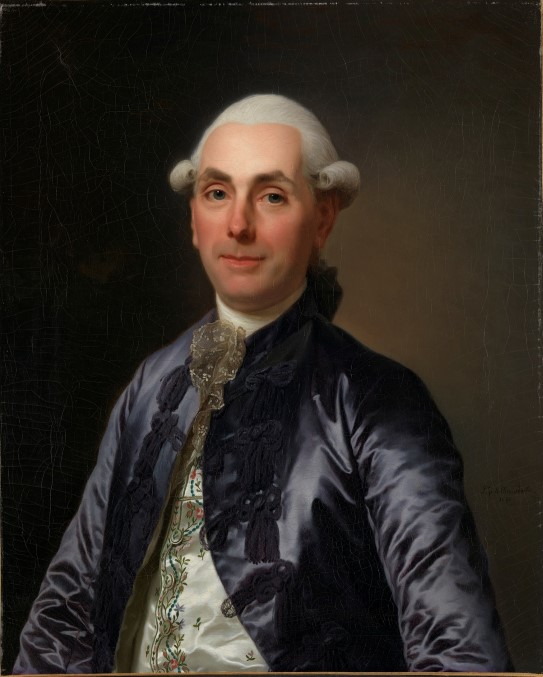François Puissant de la Villeguérif
Alexander Roslin
Transcription
Narrator:
What’s a hunk? This is a hunk. An eighteenth-century version. At that time, narrow shoulders, an arched back, silken stockings, shirts decorated with embroidery and lace – all these things were the epitome of handsomeness and masculinity.
And so this is how this exquisitely dressed Frenchman, François Puissant de la Villeguérif, would have looked as he made his way around Paris, exuding masculinity and authority.
Adam Schjølberg is a Norwegian hairdresser, comedian and author.
Looking at the Frenchman’s portrait, Adam comments:
Adam Schjølberg:
If you look at François, then you see that either he is wearing a wig or his own hair has been back-combed. A lot of time is being spent on styling his hair each morning. People used powder to change the colour of their hair. Perhaps this shade of grey was intended to indicate wisdom — we associate grey hair like this with wisdom, in one way or another, and also with intelligence, and, not least, wealth.
Narrator:
Clothing and physique say a lot about who we are, and who we want to be. Specific clothes can pigeon-hole us, they can show what social class we belong to, or aspire to. Janne Helene Arnesen is a fashion historian at the National Museum. Comparing the painting with illustrations of outfits worn by men at the French royal court, she says:
Janne Helene Arnesen:
If you observe the man portrayed here, we see that his coat looks similar to the ones that we see in fashion illustrations from the period. The outfit in one specific illustration from the period is almost identical to his, with the purplish coat and the white waistcoat and the matching breeches. And there’s also the beautiful frogged braid on the coat. And this is from the court of Louis the Sixteenth, it actually says so specifically on the illustration. So either he was directly associated with the court, or he had certain, how shall I put it, certain expectations in life. In which case, he’s using his clothes to tell us: “I’m a member of the ruling elite in Northern France. I’m one of them.”